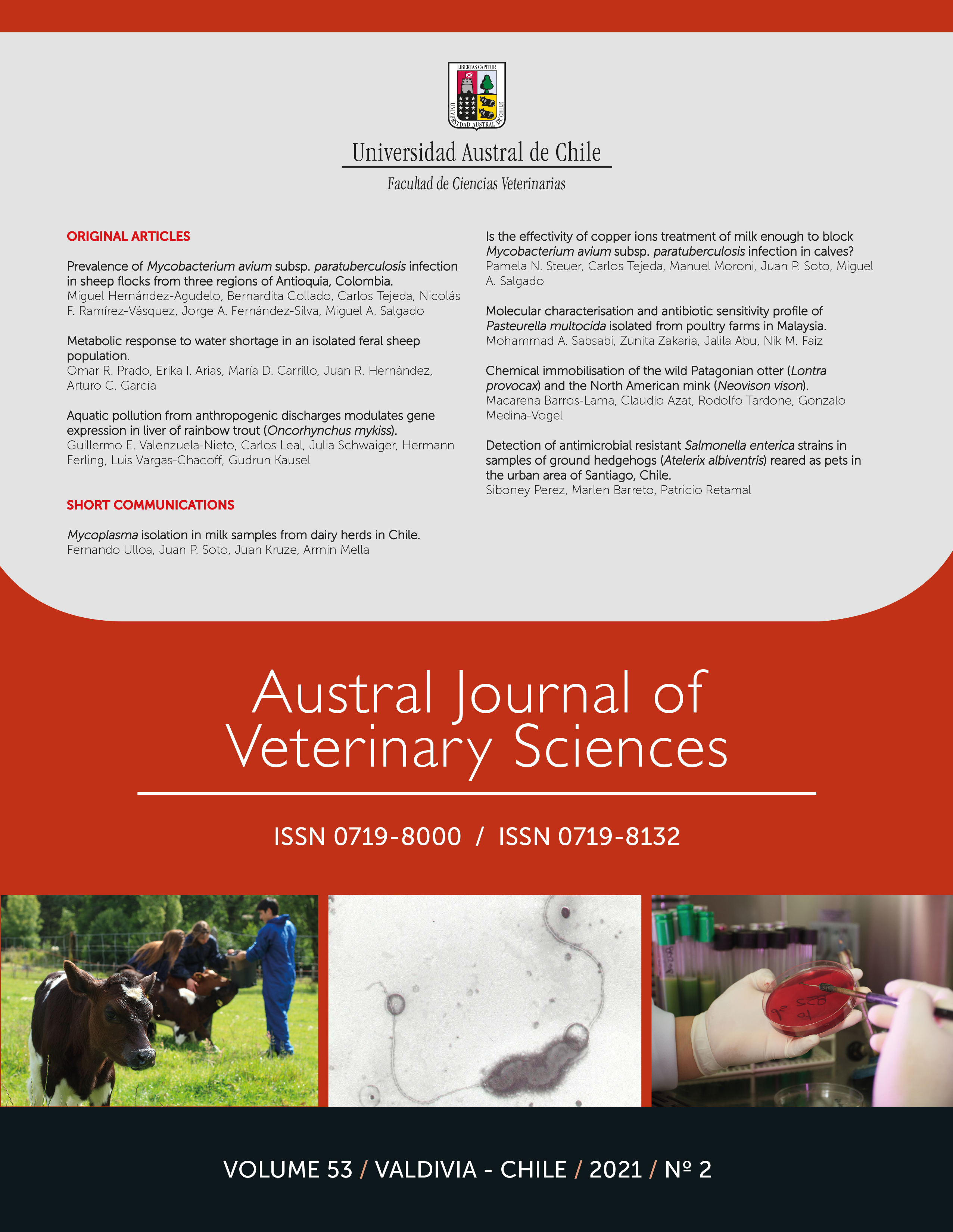Is the effectivity of copper ions treatment of milk enough to block Mycobacterium avium subsp. paratuberculosis infection in calves?
Contenido principal del artículo
Resumen
Milk is an important transmission route of Mycobacterium avium subsp. paratuberculosis (MAP) for dairy calves. Given its resistance to pasteurization, alternative milk treatments are needed to control MAP transmission via milk. The present study reports the evaluation of a novel milk decontamination treatment based on copper ions as a means of preventing infection in dairy calves. Ten newborn calves were assigned to one of two experimental groups (n=5) which were studied for 1 year. The first group was fed milk naturally contaminated with MAP and the second one received the same milk but after being treated with copper ions. In both groups, milk MAP load was estimated. The progression of the infection was monitored monthly and at the end of the study, calves were euthanised, and tissue samples were examined both grossly and by histopathology. The treatment of milk with copper ions significantly reduced the number of viable MAP. Faecal shedding of MAP was observed in both study groups, but the calves fed naturally contaminated milk began to shed MAP earlier. Only calves fed copper-treated milk showed histopathological evidence consistent with MAP infection. The latter offers more questions than answers, and maybe the presence of a more tolerant and virulent MAP strain could be the final answer to this situation.

